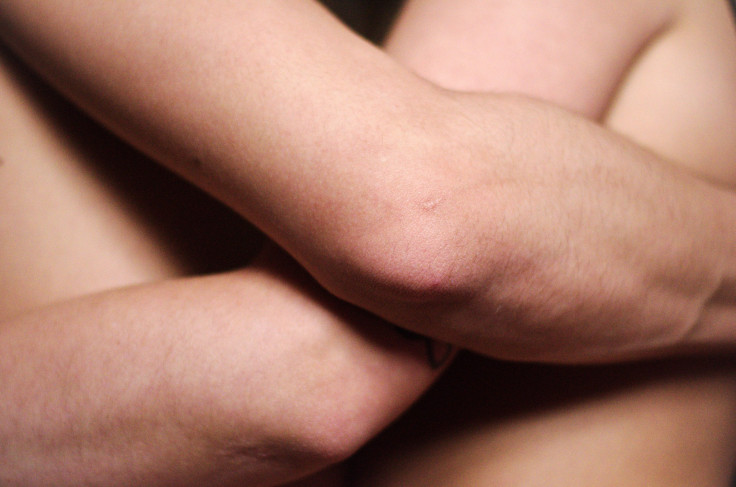The Skin Microbiome May Protect Us From Infectious Disease, Specifically One Linked To A Higher HIV Risk

The microbes that call our skin home may return the favor by helping provide a buffer against bacterial infection, a small new study published in mBio suggests.
Intentionally infecting 8 volunteers with a type of bacteria that routinely causes skin lesions in people, the study authors found that the bacterial community — or microbiome — of the surrounding skin in those who recovered quickly proved to be significantly different than those in whose infections lingered longer, both before and after the infection. That suggests that the microbiome of our skin may influence how well our bodies are able to defend against certain types of infection.
In what can only called be a novel experiment, the researchers exposed their volunteers’ upper arm to a strain of the gram-negative bacteria Haemophilus ducreyi. H. ducreyi is known to cause chancroid, a sexually transmitted disease mostly prevalent in the developing world characterized by painful soft ulcers around the genitals.
Though easily treatable with antibiotics, it’s an especially worrisome disease because those untreated are believed to be a greater risk of contracting HIV, with the infection serving as a drawbridge that allows the HIV virus to more easily take root in the person’s body. It’s also recently been implicated as a major source of chronic cutaneous ulcers (CU) elsewhere in these same poorer countries.
While about 90 percent of skin infections with H. ducreyi start with small papules, or pimples, on the skin, only about 70 percent of these go on to create pustules, inflamed pus- or fluid-filled lesions, that can progress to abscesses or ulcers The remaining 30 percent of infections clear up quickly, representing the body’s ability to fight off infection with no hassle involved.
In this study, half of the volunteers had their infection cleared quickly, while the other half developed pustules. Hard as it can be to define what a “normal” skin microbiome truly is, since so many factors can influence its composition (even a recent shower), the researchers were to find differences between the two groups.
"What we found from this study is that people who resolve infections start off with microbiomes that resemble each other. People who form abscesses in response to infection have different microbiomes that don't resemble each other preinfection, but during an infection, they get driven to one composition," said lead study author Dr. Stanley Spinola, a professor and chairman of the Department of Microbiology and Immunology at the Indiana University School of Medicine, in a statement.
Though speculative, one possible reason for their findings could be that certain microbiomes contain bacteria that crowd out the resources needed by infectious bacteria to grow, or which enable the host’s immune system to better defend against infection. Granted, this would be only be one of many factors that influence how an infection progresses. In the case of H. ducreyi for example, men are more likely to develop pustules than women. It might be also the case the skin microbiome is more of a guidepost than anything else.
"The number one question is whether the microbiome that is present in patients who resolve the infection is merely a signature of an innate immune system that is good at clearing the skin of infections or are there specific bacteria in that composition that are helping the immune system clear the pathogen," said Spinola.
It’s a question that can only be answered with more research, Spinola and his colleagues believe.
Source: Rensburg J, Lin H, Gao X, et al. The Human Skin Microbiome Associates with the Outcome of and Is Influenced by Bacterial Infection. mBIO. 2015.
Published by Medicaldaily.com



























